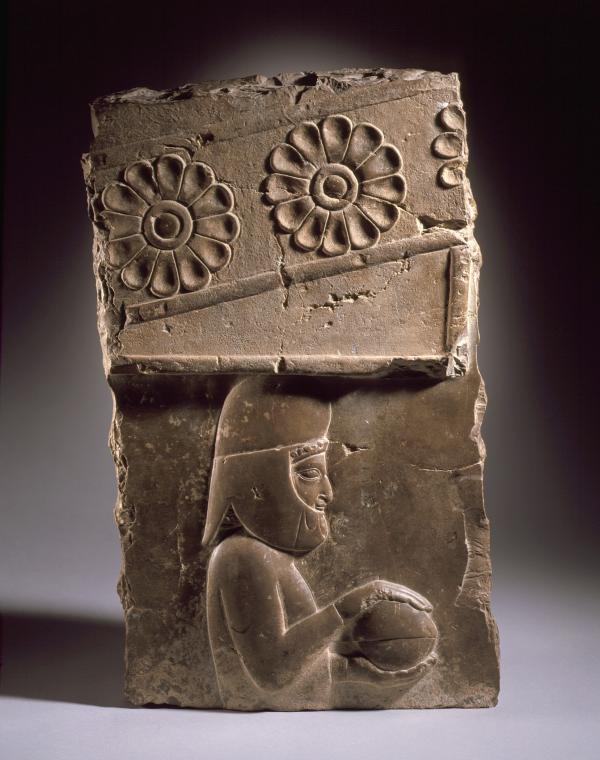In this fragment from a larger relief, a man is depicted carrying a covered vessel. His dress suggests that he's a nobleman from Media, an area that stretches from present-day Turkey to Iran. The fragment was probably a part of the decorated staircase of Tachara, the private palace of Darius I the Great (reigned 521–486 B.C.). Built by Darius I, Tachara is one of the magnificent palaces located in the capital Persepolis (present-day Iran). The complex underwent a period of construction that stretched for over 60 years and is made up of numerous buildings situated on raised ground and platforms.
The Persepolis palaces contain the best-known examples of stone relief decoration from the Achaemenid empire (559–330 B.C.). It is likely that this fragment came from the king's main audience hall at Persepolis, which was outfitted with double staircases featuring an elaborate series of reliefs that were mirror images of each other. Within the reliefs were depictions of delegations from the entire empire, including Median and Persian noblemen, guards, and attendants, who are shown bringing presents and tributes to Persepolis.
Relief of a Gift Bearer from Persepolis is currently on view on the third floor of the Hammer Building. Check out LACMA's Collections Online and download a high-resolution image.
This year marks LACMA's 50th anniversary. We're celebrating all that we've done while looking forward to what's in store for us in the next 50. Check back every week on Unframed to find a highlight of an artwork from LACMA's collection, which features over 120,000 objects that span time, the globe, and all cultures. This is 6/50 of the series. This text was adapted from LACMA's Collections Online page.



